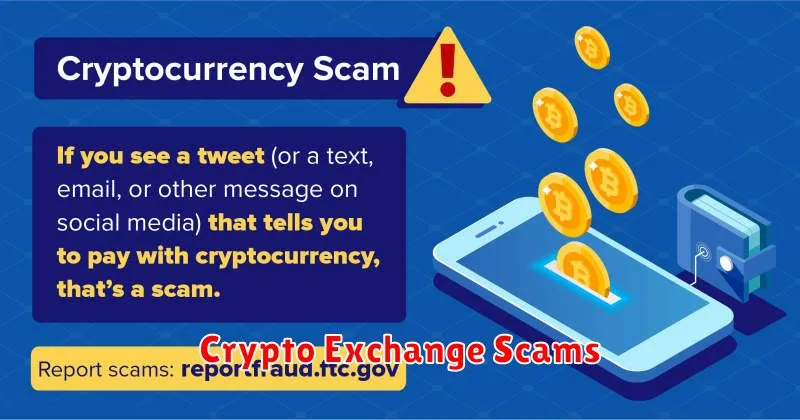Navigating the world of cryptocurrency exchanges can be daunting, especially with the ever-present risk of scams. This comprehensive guide, “How to Avoid Scams on Crypto Exchanges,” will equip you with the knowledge and strategies to protect yourself from fraudulent activities, including phishing attacks, rug pulls, and ponzi schemes. Learn how to identify red flags, verify exchange legitimacy, and secure your digital assets to confidently trade in the crypto market.
Recognizing Fake Crypto Exchanges
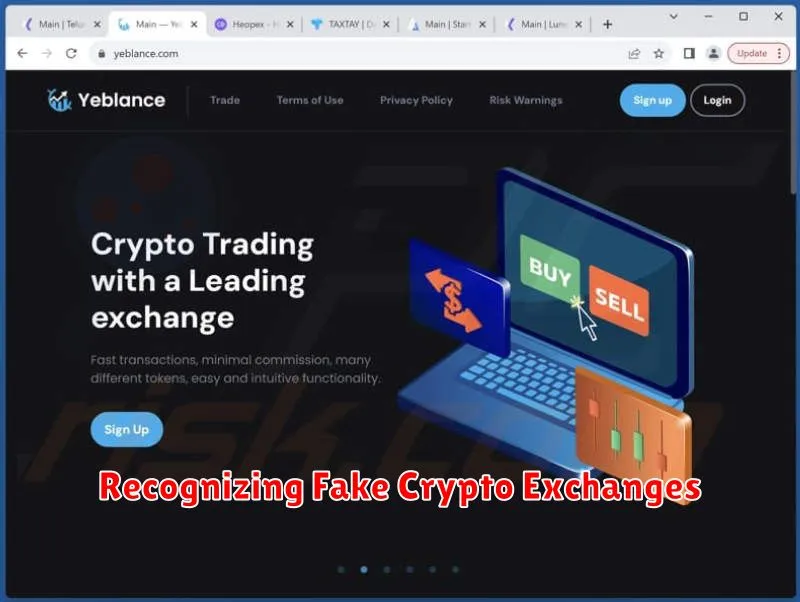
Fake crypto exchanges are designed to steal your cryptocurrency. Identifying them requires vigilance. Look for inconsistencies in their website design, lack of clear contact information, or questionable security protocols. A legitimate exchange will have a professional website, transparent fees, and readily available customer support.
Beware of unusually high returns. Promises of unrealistic profits are a major red flag. Legitimate exchanges offer competitive but reasonable rates. Avoid platforms promoting guaranteed high returns or get-rich-quick schemes.
Check for registration and licensing. Reputable exchanges are usually registered and licensed with relevant financial authorities. Verify their regulatory status to ensure they operate legally. The absence of such information is a significant warning sign.
Investigate user reviews and feedback. Before using any exchange, research online reviews from other users. Negative reviews highlighting scams or security breaches should prompt caution. Trustworthy platforms usually have positive feedback from a significant number of users.
Verify the exchange’s security measures. Legitimate exchanges prioritize security. Look for features such as two-factor authentication (2FA), cold storage for cryptocurrency assets, and encryption protocols. A lack of robust security measures indicates a high risk of theft.
Avoiding Phishing Attacks
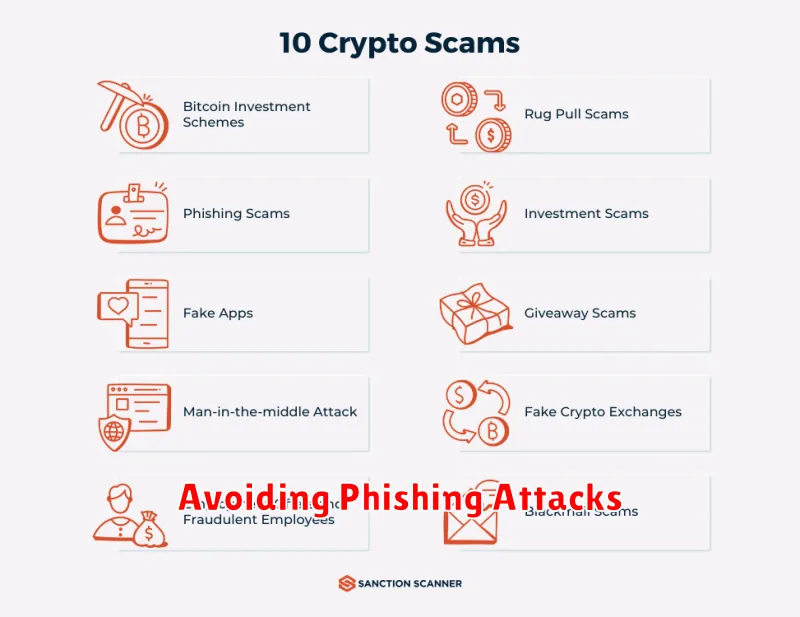
Phishing attacks are a major threat on crypto exchanges. Scammers often impersonate legitimate exchanges or services via email, text message, or even fake websites. These communications typically try to trick you into revealing your login credentials, private keys, or seed phrases.
To avoid phishing attacks, always verify the sender’s identity before clicking any links or providing any personal information. Check the email address or phone number carefully. Legitimate exchanges will never ask for your private keys or seed phrases. Access your exchange account only through the official website or app, and be wary of any unsolicited communication asking for sensitive information.
Never click on links in suspicious emails or texts. Instead, type the exchange’s URL directly into your browser. Look for signs of a legitimate website, such as a secure connection (HTTPS) and a properly registered domain name. If something feels off, contact your exchange’s customer support directly through their official channels.
Enable two-factor authentication (2FA) on all your crypto exchange accounts. 2FA adds an extra layer of security, making it much harder for phishers to access your account even if they obtain your password.
Regularly review your account activity for any unauthorized transactions. Immediately report any suspicious activity to your exchange and relevant authorities. Being proactive and vigilant is crucial in protecting yourself from phishing scams.
How to Verify an Exchange’s Legitimacy
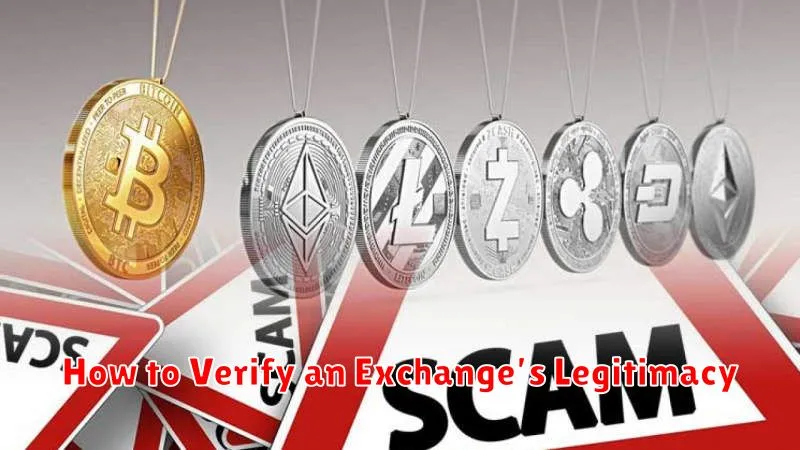
Verifying the legitimacy of a crypto exchange is crucial to avoid scams. Begin by checking for a legitimate registration and licensing. Reputable exchanges are typically registered with relevant financial authorities in their operating jurisdictions. Look for information about their registration number and licensing details on their website. This information should be readily accessible and verifiable.
Next, investigate the exchange’s security measures. A secure exchange will have robust security protocols in place, such as two-factor authentication (2FA), cold storage for user funds, and regular security audits. Check the exchange’s website for details about their security practices and look for independent audits conducted by reputable cybersecurity firms. The presence of SSL encryption (indicated by a padlock icon in your browser’s address bar) is also important.
Customer reviews and ratings provide valuable insights into an exchange’s trustworthiness. Explore independent review platforms and online forums to assess user experiences. Pay attention to comments regarding security, customer service, and the ease of using the platform. Negative reviews that highlight issues like slow withdrawals, poor customer support, or security breaches should raise red flags.
Finally, assess the exchange’s transparency and track record. Reputable exchanges are usually transparent about their operations, fees, and team members. Investigate their history and look for any instances of regulatory issues or negative media coverage. A lack of transparency or a history of scandals should deter you from using the platform.
Understanding Trading Volume and Liquidity
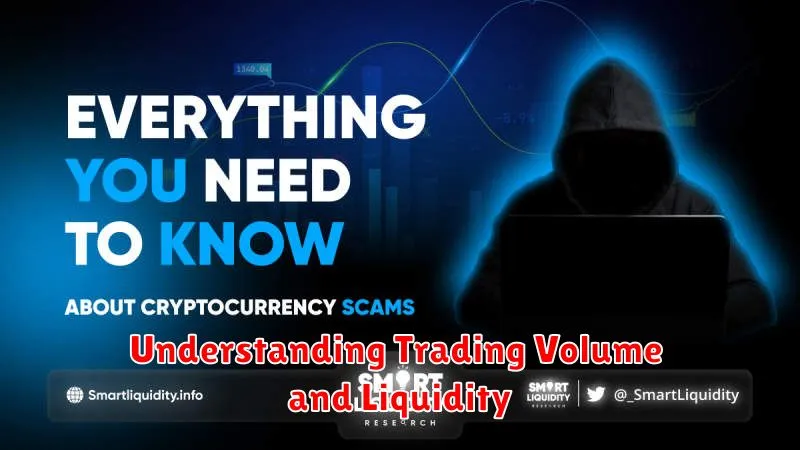
Trading volume refers to the total number of cryptocurrency units traded within a specific timeframe on an exchange. High volume generally suggests a more active and liquid market, but it’s not a guarantee of legitimacy.
Liquidity describes how easily an asset can be bought or sold without significantly impacting its price. High liquidity is desirable as it allows for quicker and easier transactions. Low liquidity can be a red flag, potentially indicating a scam exchange where it’s difficult to exit a trade.
Beware of manipulated volume. Some scam exchanges inflate their trading volume artificially to appear more reputable and attract investors. Scrutinize the volume figures and compare them across multiple sources. Discrepancies may signal manipulation.
Low liquidity can be a significant warning sign. If you find it difficult to buy or sell a cryptocurrency on an exchange, it could indicate a lack of genuine trading activity, increasing the risk of being unable to withdraw your funds. Always prioritize exchanges with demonstrably high liquidity across various cryptocurrencies.
Understanding both trading volume and liquidity is crucial in assessing the trustworthiness of a cryptocurrency exchange. While high volume and liquidity don’t eliminate all risk, they help to reduce the probability of encountering a scam.
Why You Should Never Leave Funds on an Exchange
Leaving cryptocurrencies on an exchange exposes you to significant risks. Exchanges are vulnerable to hacking, and a successful breach could result in the loss of your entire investment.
Furthermore, exchanges are subject to regulatory changes and financial instability. If an exchange goes bankrupt or is seized by authorities, your funds could be frozen or lost.
Holding your crypto assets in a personal wallet that you control gives you ownership and significantly reduces your exposure to these risks. Only keep the minimum amount of cryptocurrency necessary for trading on the exchange itself.
In short, safeguarding your investments demands prioritizing security and control, which is best achieved by storing your cryptocurrencies in a secure, personal wallet rather than leaving them on an exchange.
Regulatory Compliance: Is the Exchange Licensed?
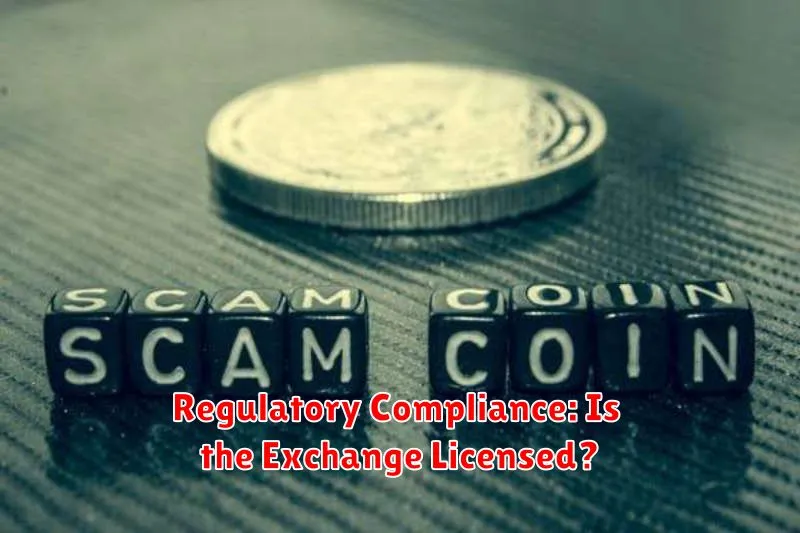
One of the most crucial aspects of avoiding cryptocurrency exchange scams is verifying the platform’s regulatory compliance. Licensing signifies that the exchange operates under the scrutiny of a recognized regulatory body, indicating a commitment to adhering to specific rules and standards designed to protect investors.
Before investing, research whether the exchange holds the necessary licenses in your jurisdiction or the jurisdiction where the exchange is based. The absence of licensing doesn’t automatically equate to a scam, but it significantly increases the risk. Legitimate exchanges typically display their licenses prominently on their website.
Look for licenses from reputable financial authorities. The specific regulatory bodies vary by region, so familiarize yourself with those relevant to your location. Transparency regarding licensing is key; if the information is difficult to find or unclear, proceed with extreme caution.
While licensing provides a level of protection, it’s not a foolproof guarantee against scams. Always conduct thorough due diligence beyond licensing, including checking for user reviews and security measures.

